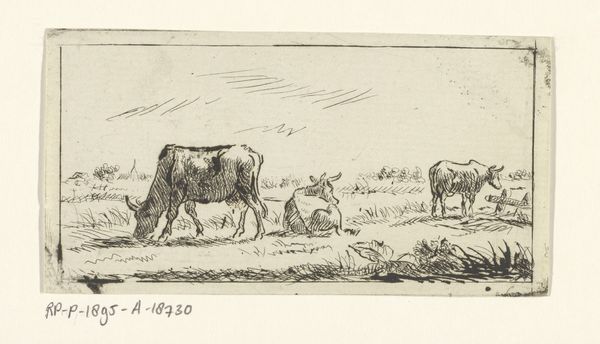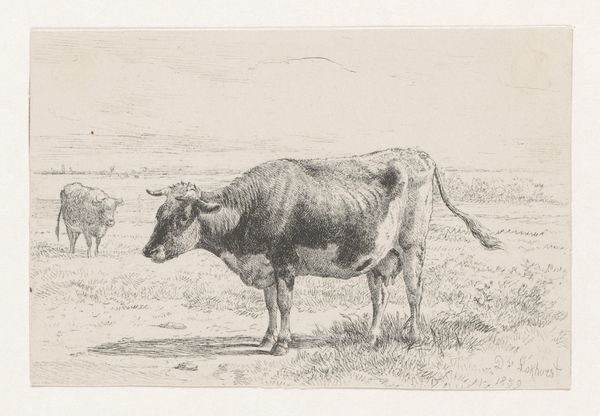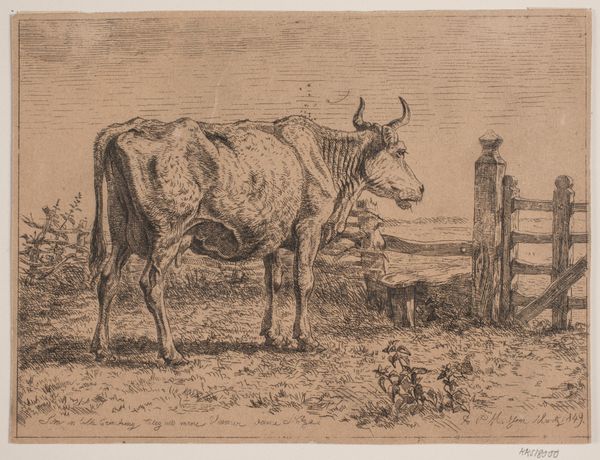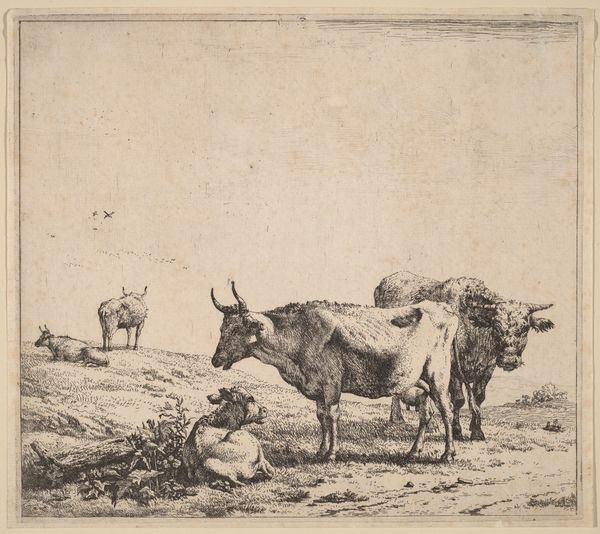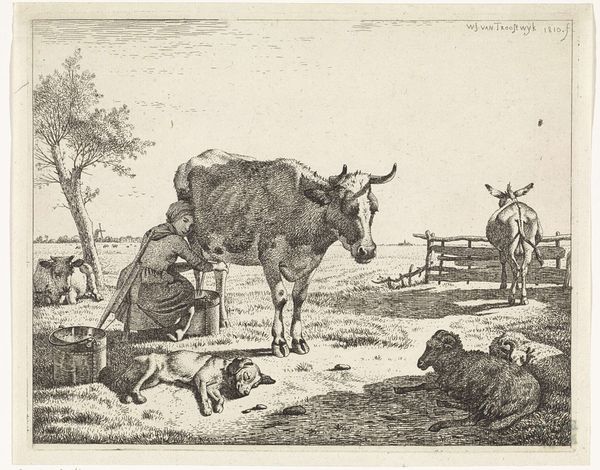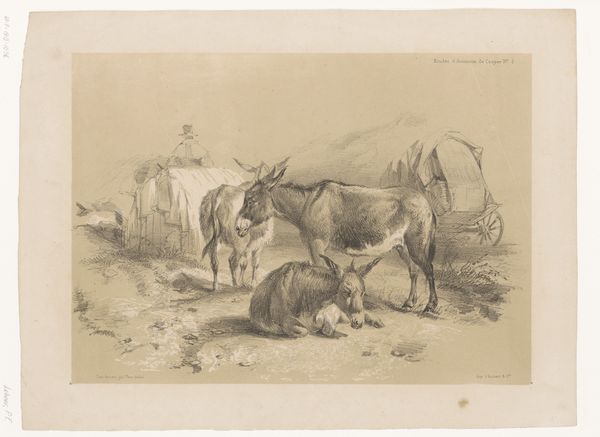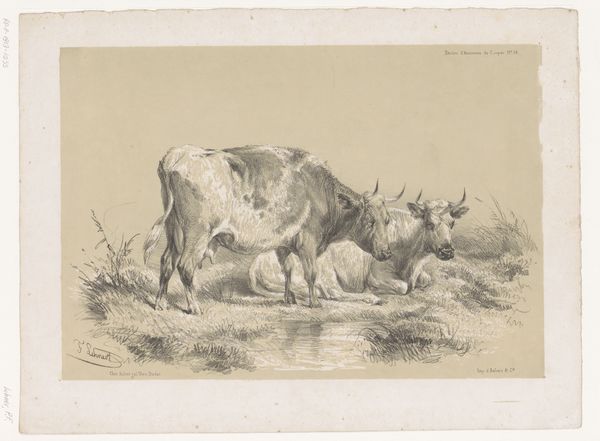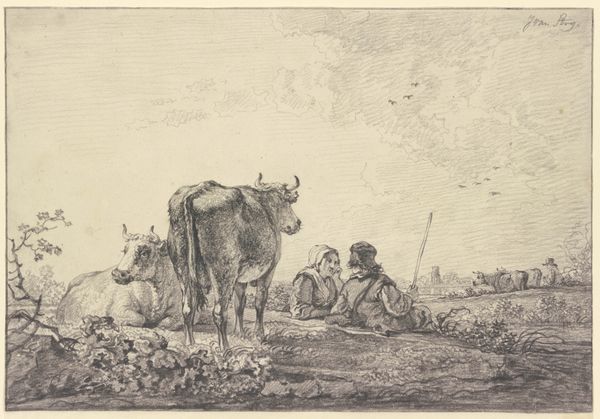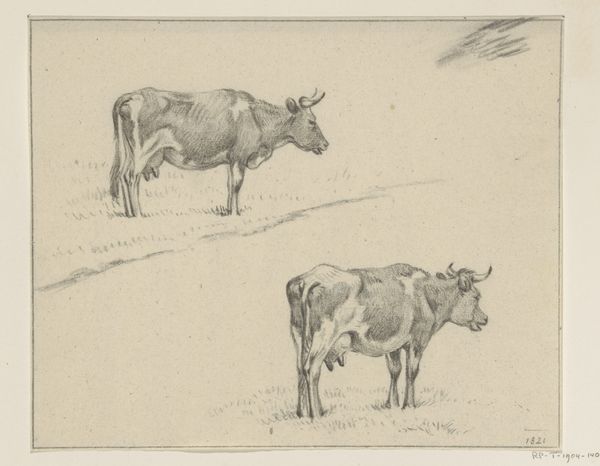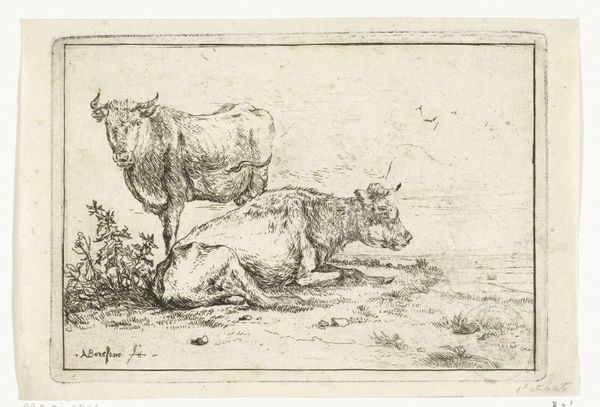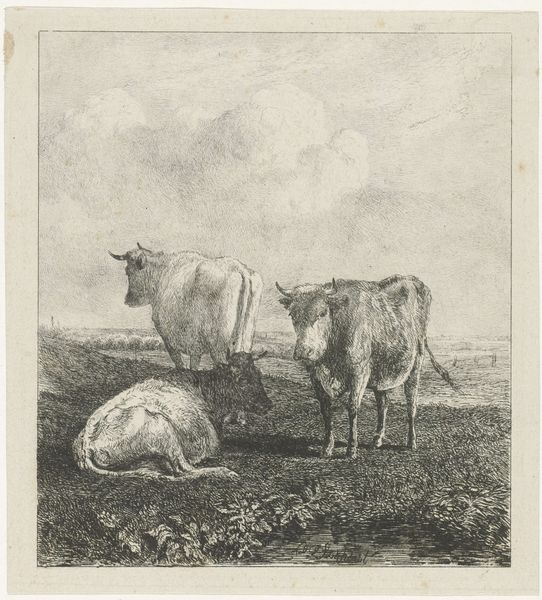
drawing, etching
#
drawing
#
animal
#
etching
#
landscape
#
genre-painting
#
realism
Dimensions: height 96 mm, width 143 mm
Copyright: Rijks Museum: Open Domain
Curator: This delicate etching, “Two Cows in a Landscape,” was created around 1775 by Carl Wilhelm Weisbrod. It showcases the rural scenes that were gaining popularity at the time. Editor: It’s remarkably peaceful. The texture created by the etching brings a certain tactility to the animals and the landscape, especially the grass. There’s an undeniable sense of contentment. Curator: The prevalence of animal imagery, particularly of livestock, served as potent symbols. They represent wealth, pastoral stability, and an idealized vision of agrarian life embraced by the rising middle class. It's a powerful statement about societal values, even if it glosses over the harsh realities of rural labor. Editor: The cows themselves seem very deliberately placed within the frame. One stands, grazing placidly, the other rests, almost posed. It feels carefully observed, capturing a specific, leisurely moment. Does that stillness mirror the social climate of the era? Curator: Possibly. The artist may be consciously or unconsciously invoking an idea of natural order. But I wonder if we also project that reading onto the work? Certainly the growing urbanization and industrialization made these images nostalgic and desirable to people. Editor: It is interesting how such an everyday scene, just two cows, really, manages to say so much about history and social standing, and also the very nature of memory itself. It's much more evocative than one initially suspects. Curator: Precisely. What might seem at first glance as a quaint genre painting offers a profound reflection on shifting cultural values. These seemingly simple scenes speak volumes if you’re listening carefully.
Comments
No comments
Be the first to comment and join the conversation on the ultimate creative platform.
